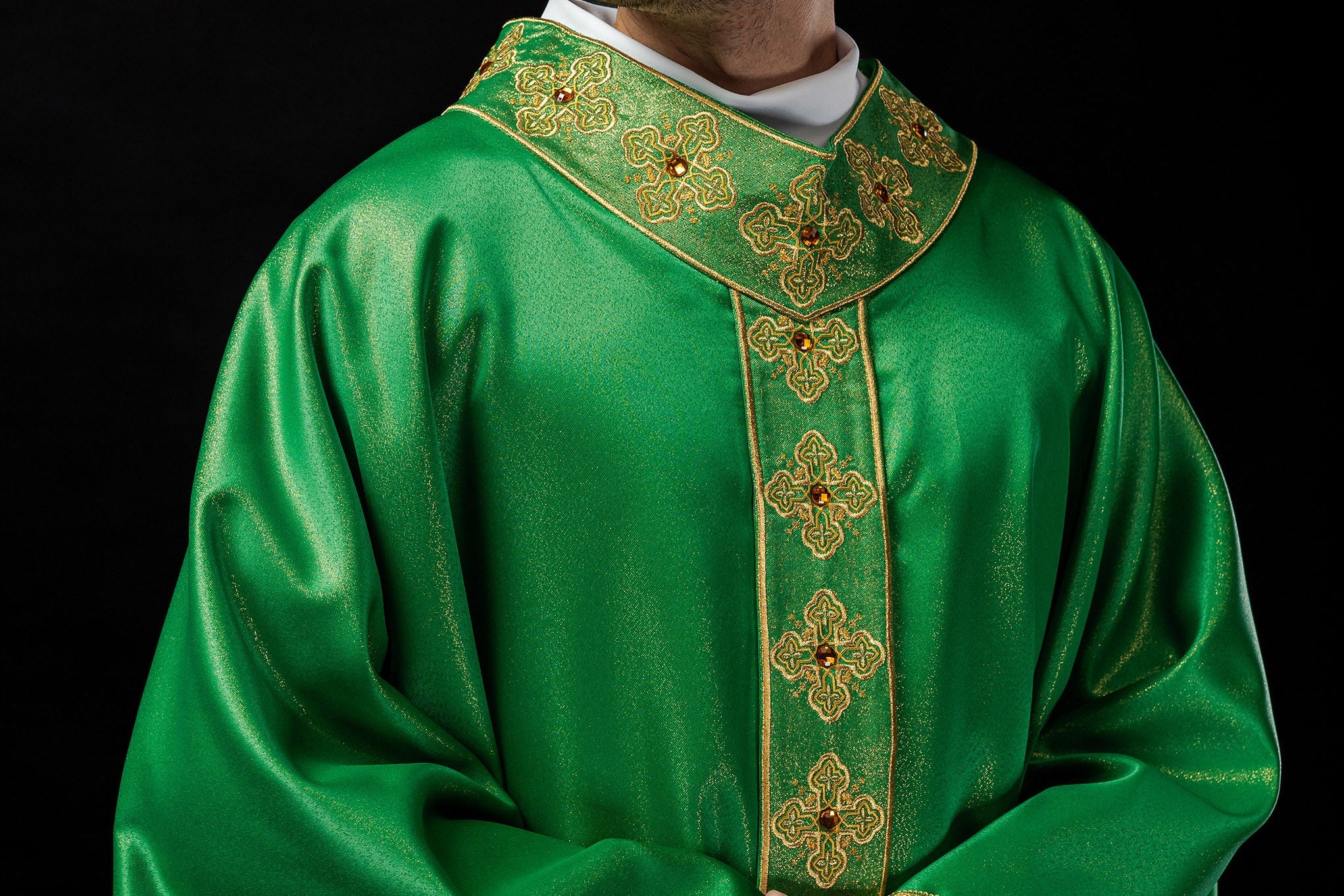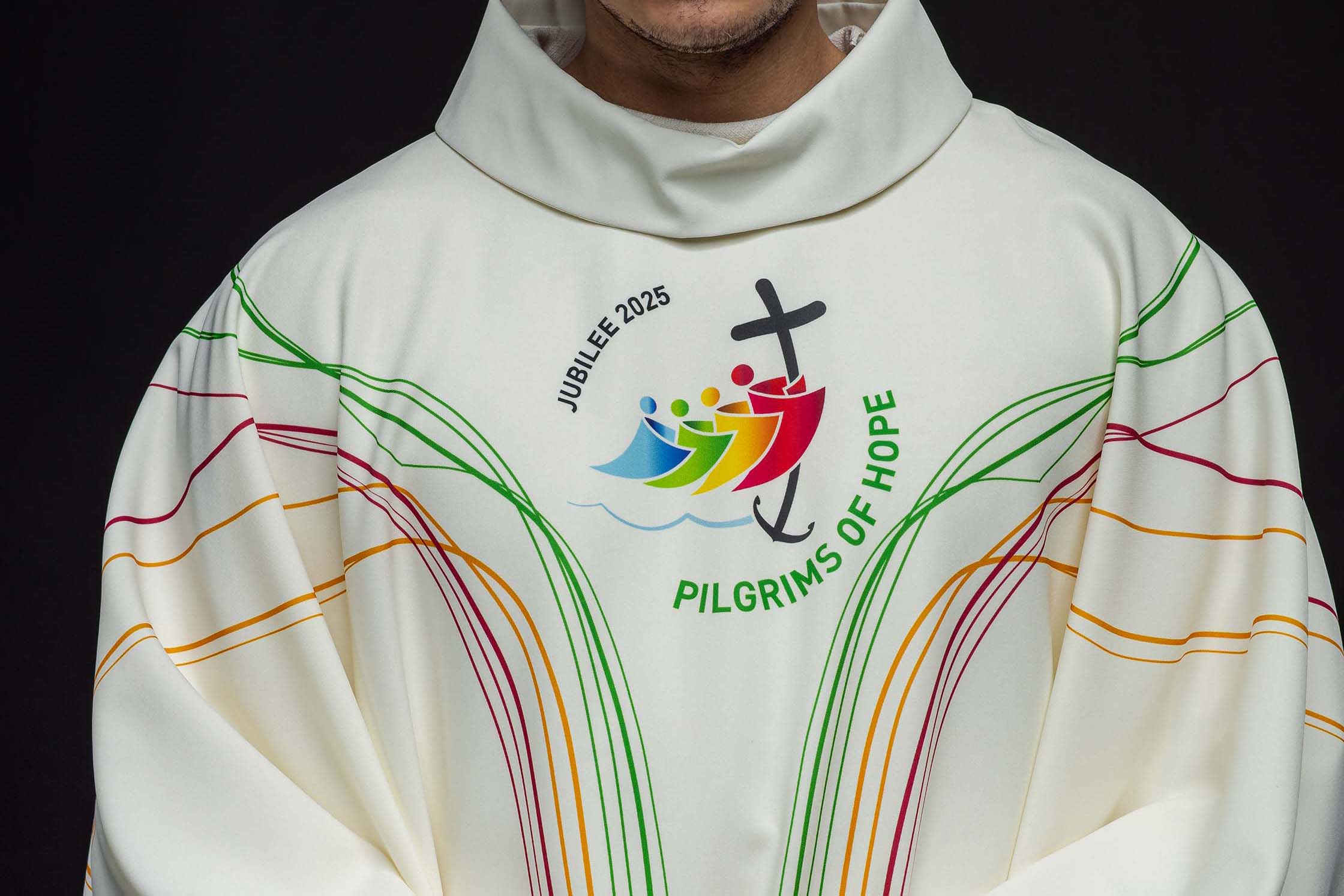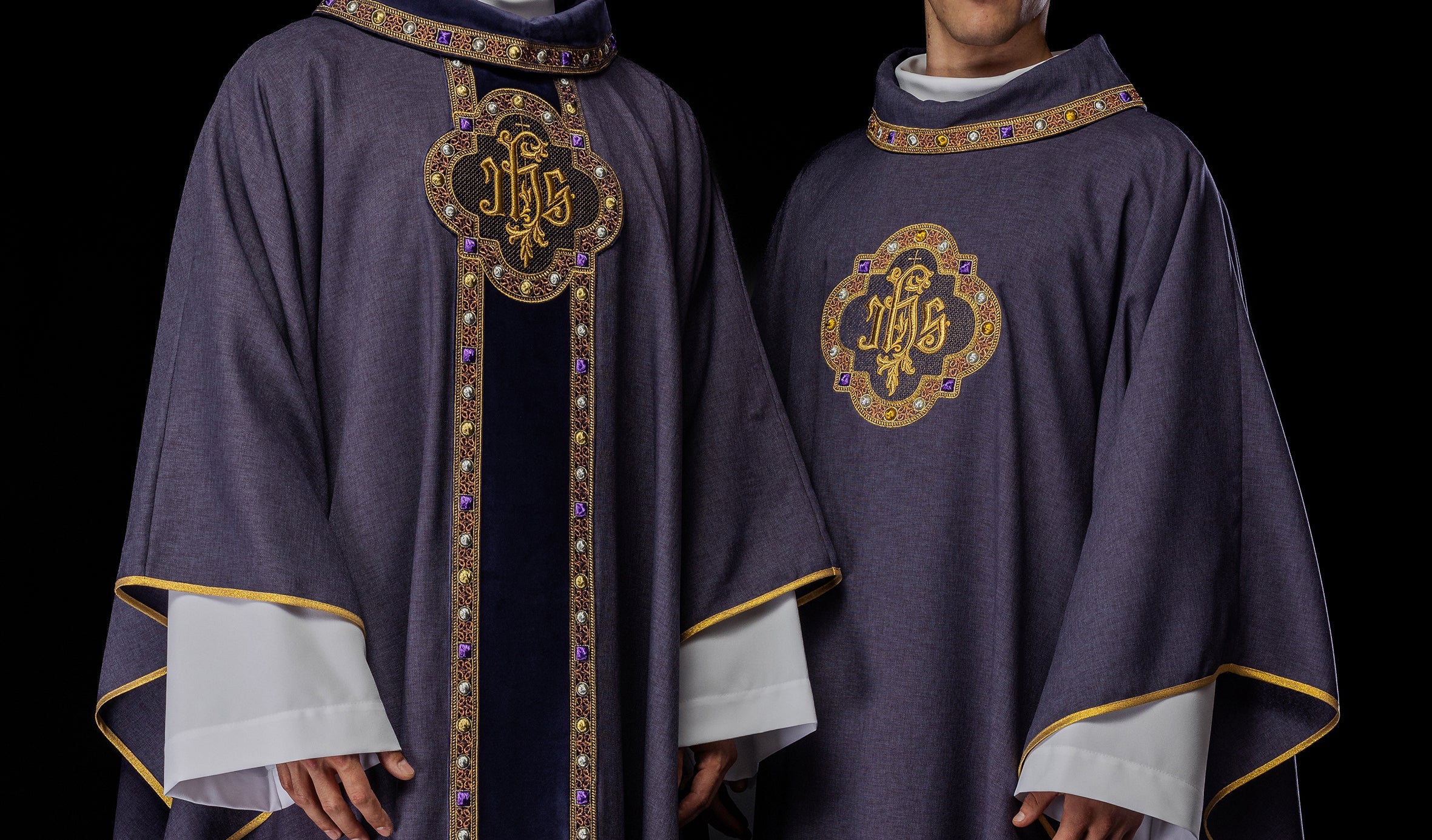
Youth Vestments: Do They Exist, and When Are They Used?
Youth Chasubles – Do They Exist and When to Use Them?
In an increasingly dynamic and diverse world of liturgy, we seek solutions that allow us to fully engage all members of the community, including young people. One aspect of this issue is the presence of young people in beautiful and appropriate liturgical vestments, which naturally raises the question: do chasubles specifically designed for them exist, and when is it actually appropriate for them to use them?
Do Special Youth Chasubles Exist?
The answer to this question is not straightforward and requires looking at it from several angles. Strictly speaking, the term "youth chasuble" is not commonly used in official liturgical documents or by vestment manufacturers. Therefore, we will not find a dedicated product category under such a name. Nevertheless, the reality of parish and pastoral life suggests certain solutions that can be described as "youth" oriented.
The key here is understanding the needs and capabilities of young people. Chasubles, being the most solemn liturgical vestment of a priest, should be tailored not only to the function but also to the age and stature of the person wearing them. Young altar servers, lectors, and even young priests beginning their ministry need vestments that are not restrictive and, at the same time, allow them to feel part of the solemn ceremony.
Manufacturers, such as Haftina Textile Group, typically offer standard sizes of chasubles, which can be divided into different categories – from the smallest for altar boys to larger ones for adults. However, standard children's or junior sizes may not be perfectly suited to all teenagers. In such situations, the possibility of individual adjustment of dimensions or the selection of models with a more universal cut comes into play.
What Distinguishes a "Youth Chasuble" from a Standard One?
If we were to talk about the characteristics that could distinguish such a hypothetical "youth chasuble," these would primarily be:
- Size and Cut: Adapted to the lower stature and slimmer figure of a young person. Shorter sleeves, smaller overall length, and a suitably contoured shape can be crucial.
- Materials: Lighter and more breathable fabrics may be preferred to ensure comfort during long celebrations, especially in warmer months. Natural fabrics, such as linen or cotton, or special blends, may be a good choice.
- Design and Embroidery: Although religious symbolism remains key, more subtle or contemporary embroidery patterns that may be more attractive to young people can be considered. However, it is important that the embroidery is always consistent with liturgical symbolism and never childish or inappropriate.
- Color Scheme: Although the colors of liturgical vestments are strictly determined by the liturgical calendar, choosing a fabric with an interesting texture or subtle sheen can add a touch of modernity.
It is important to emphasize that even in the case of the youngest, the chasuble must always be a dignified vestment made with due care, so that it emphasizes the sacredness of the moment and the role of the young person wearing it.
When Can Young People Use Chasubles?
The use of chasubles by young people is closely related to their function in the liturgy. The chasuble is a **presidential** liturgical vestment, meaning it is worn by the presbyter (priest) during the celebration of Holy Mass. All other functions, such as serving as an altar server or lector, while extremely important, do not require wearing chasubles.
However, young people may come into contact with chasubles in the following contexts:
- Young Priests: The most obvious case is when a young man receives priestly ordination. From that moment on, he can celebrate the Eucharist in a chasuble. Haftina Textile Group offers a wide selection of chasubles in various styles, from classic to more modern, from which the young priest can choose the one that best suits his needs and aesthetics.
- Special Occasions and Liturgies with Youth Participation: Sometimes, during important pastoral events with youth participation, such as World Youth Days, pilgrimages, or special services, scenes depicting biblical or liturgical events may be organized in which young people play specific roles. In such situations, in accordance with the orders of the appropriate church authorities or the pastor, vestments resembling chasubles may be used, although they are not used canonically within the liturgy.
- Altar Servers and Lectors in Special Vestments: In some parishes, there is a trend of dressing young altar servers or lectors in more solemn vestments that resemble cassocks or surplices in form, but these are not chasubles. Sometimes, for special occasions, altar servers may receive more ornate surplices or albs that emphasize their important role.
- Celebrating Liturgy with Youth as the Subject: In the case of particularly engaged youth groups that actively participate in the preparation and setting of Holy Mass, consideration may be given to creating special, less formal liturgical vestments that refer to tradition but are adapted to the age and activity of young people. However, such a project requires consultation with the pastor and consideration of local customs.
Examples and Inspirations
Haftina Textile Group offers a wide selection of chasubles that can also be an inspiration when adapting sizes for young people. Particularly interesting may be models made of lighter fabrics, with a simpler cut, with symbolic embroideries, but not overloaded with ornamentation. Colors such as white, gold, green, or purple always perfectly fit into the liturgical calendar.
It is worth paying attention to the variety of available embroideries – from the classic IHS, through Eucharistic symbols such as the chalice and ears of wheat, to Marian motifs or depictions of saints. The selection of an appropriate embroidery can be an element emphasizing the message of the liturgy or the patron saint of the celebration.
How to Choose the Right Chasuble for a Young Person?
If we are faced with the need to choose liturgical vestments, including potentially chasubles, for a young person, it is crucial to approach it with respect for tradition and, at the same time, sensitivity to the needs of age.
- Consultation with the Pastor: Always the first step is a conversation with the parish priest or the person responsible for the liturgy in the parish. He will determine whether and under what circumstances a young person may be dressed in liturgical vestments, as well as what guidelines apply to their appearance.
- Measurement of Posture: If the decision is made to create a custom-made chasuble, the young person should be measured accurately – height, chest circumference, length of arms and overall length.
- Fabric Selection: Opt for comfortable, breathable materials that do not restrict movement. Natural fabrics or specialized liturgical materials are usually the best choice.
- Cut and Design: Consider simple cuts that are not overly ornate, but at the same time elegant. The embroidery should be clear, symbolic, and made with attention to detail.
- Color Matching: Remember to comply with the liturgical calendar. The colors of liturgical vestments have their deep meaning and are unchanging.
The Role of Youth in Liturgical Vestments
Engaging youth in the liturgical life of the Church is extremely important for their spiritual development and sense of belonging to the community. Using appropriate liturgical vestments, even if they are not classic chasubles, can be one way to emphasize their role and involvement. It is not only a matter of aesthetics but also of building a sense of dignity and holiness of ministry.
Haftina Textile Group, as a manufacturer with many years of experience, perfectly understands the need for versatility and an individual approach to the client. Although we do not offer a specific line of "youth chasubles," our production capabilities allow us to adapt even the most demanding projects. We invite you to familiarize yourself with our offer of chasubles and other liturgical vestments at haftinausa.com, where you will certainly find inspiration and products of the highest quality that will serve for years, regardless of age.
Summary
In summary, although the term "youth chasuble" is not formally sanctioned, the pastoral reality and the need to engage youth in the liturgy lead to the search for solutions. Most often, young people come into contact with chasubles as future priests, or in special, non-regulatory contexts during religious events. The key is to adapt the size, material, and design to the young person, while maintaining respect for tradition and liturgical symbolism. If there is a need to create individual vestments, it is worth using the experience of professional manufacturers, such as Haftina Textile Group, to ensure the highest quality and compliance with needs.
```




